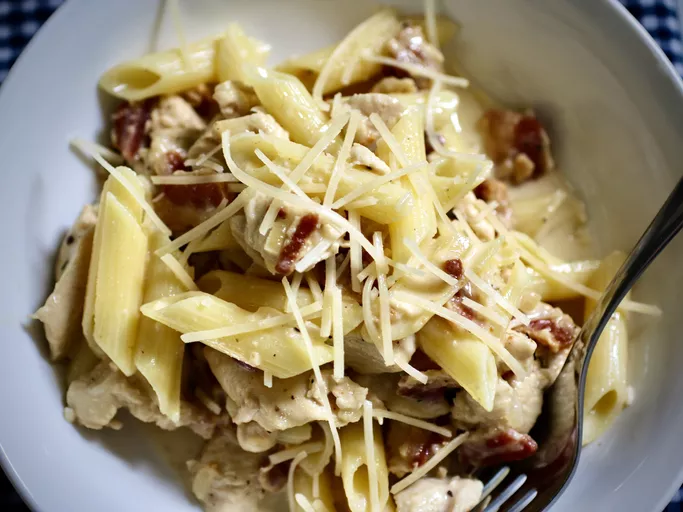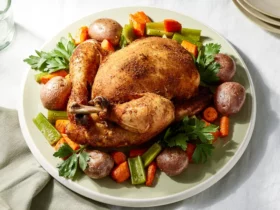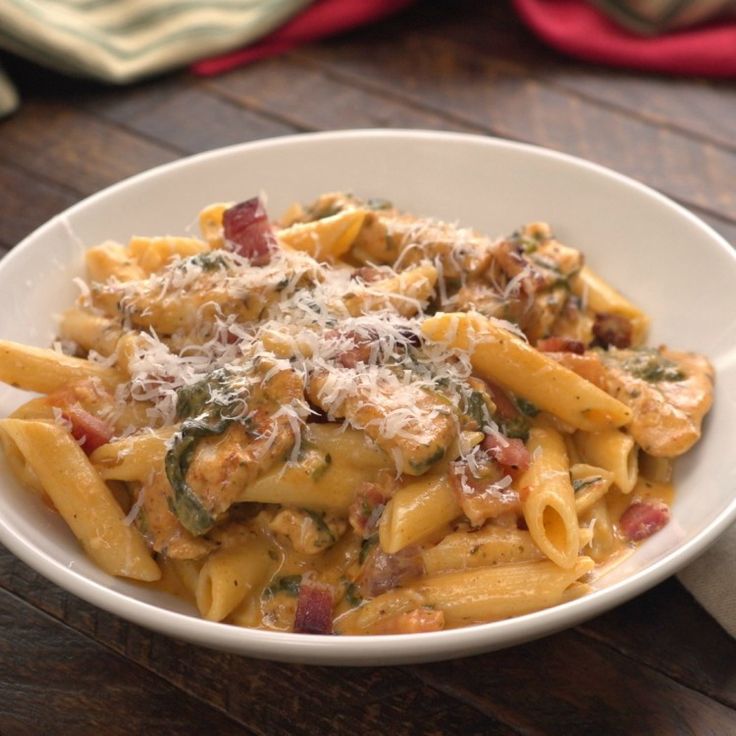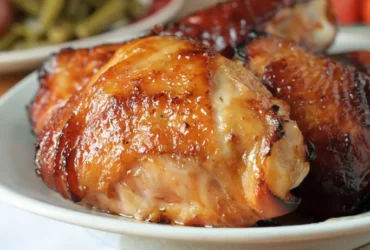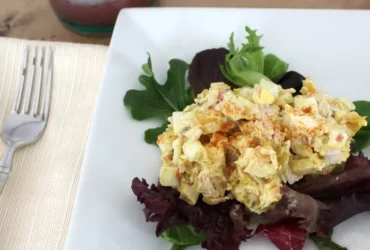Ingredients and Origins
Ancient Roots in Italian Cuisine
The rich flavors and aromas of Italian cuisine have been delighting palates for centuries, with its roots dating back to ancient times when the Mediterranean diet was shaped by the country’s strategic location and diverse cultural influences.
One of the fundamental ingredients in many a beloved Italian dish is Pasta , which has undergone significant changes over time. From the earliest forms made from durum wheat semolina, which was first produced during the Roman Empire, to the modern-day varieties found on every Italian table, pasta remains an integral part of the country’s culinary heritage.
Anchoring many a classic recipe is Guanciale , Italy’s version of cured pork jowl. Its rich, savory flavor has been prized for centuries and is often used in combination with other ingredients like eggs, parmesan cheese, and black pepper to create iconic dishes such as Carbonara.
However, when it comes to the quintessential Italian recipe of Chicken-Bacon Carbonara, a key departure from tradition can be observed. The addition of chicken, which is not typically found in traditional recipes, sets this dish apart from its ancient roots and serves as an example of how modern influences have shaped Italian cuisine.
Similarly, the use of Bacon rather than guanciale adds a distinct flavor profile to the recipe. While both ingredients share similarities as cured meats, their different preparations set them apart in terms of taste and texture. This substitution highlights the adaptability and creativity that characterizes modern Italian cooking.
The combination of chicken, bacon, eggs, parmesan cheese, and black pepper results in a rich and satisfying flavor profile that remains faithful to the spirit of traditional Italian cuisine while also embracing new flavors and techniques. As with many adaptations and fusions of ancient recipes, the end result is a unique expression of Italian culinary artistry.
Ultimately, Chicken-Bacon Carbonara represents not only an evolution from its roots in traditional Italian cuisine but also a testament to the enduring influence of diverse cultural traditions on modern cooking practices. By embracing changes and adapting classic recipes to suit contemporary tastes, Italian chefs continue to innovate while maintaining a deep connection to their culinary heritage.
Italian cuisine has a long history of using eggs, cheese, and cured meats in their dishes.
The dish that has sparked a great deal of debate among food enthusiasts, Chicken-Bacon Carbonara is a staple of Italian cuisine with origins dating back to the 1950s and 60s in Rome.
However, traditional Italian cuisine had already incorporated eggs and cheese in various forms for centuries prior.
Key Ingredients
- Eggs: Whole eggs or egg yolks are a fundamental component of carbonara. In the past, farm-fresh eggs were commonly used in cooking and baking in Italy.
- Pecorino Romano:This sharp, salty cheese is made from sheep’s milk and originates from the Lazio region, where Rome is located.
- Guanciale or Pancetta: Cured meats are an essential part of Italian cuisine. Guanciale (pork jowl) is a classic choice for carbonara, while pancetta (cured pork belly) is also commonly used in other dishes like pasta sauces and salads.
In terms of specific ingredients for Chicken-Bacon Carbonara, the modern recipe often includes chicken breast or thighs, cooked bacon instead of guanciale/pancetta, parmesan cheese in addition to pecorino romano, and sometimes black pepper.
In fact, the first known reference to a carbonaralike dish dates back to the 15th century.
The origins of Carbonara are often shrouded in mystery, with several countries claiming to be its birthplace. However, most food historians agree that this rich and creamy pasta dish has Italian roots.
In fact, the first known reference to a carbonaralike dish dates back to the 15th century, in a book called “Forme of Cury,” which was written by the Master Cooks of King Richard II. The recipe described is for a dish made with bacon or pancetta, eggs, and cheese.
However, it wasn’t until the mid-20th century that Carbonara became a staple of Italian cuisine. After World War II, a new generation of chefs emerged in Rome, who began experimenting with traditional recipes and ingredients to create their own unique versions of classic dishes.
The chicken-bacon version of Carbonara is believed to have originated in the 1980s, as a response to health concerns about the high fat content of traditional pancetta or guanciale. By substituting these cured meats with leaner bacon and adding cooked chicken, chefs created a lighter yet still flavorful version of this beloved pasta dish.
When it comes to making Carbonara from scratch, the key ingredients include: freshly made Pasta, typically spaghetti or fettuccine; Bacon (preferably unsmoked and preferably British), which adds a smoky depth of flavor; eggs; grated Parmesan cheese for richness and creaminess; and, of course, a pinch of black pepper.
The origins of the name “Carbonara” are also worth exploring. There are several theories, ranging from it being named after the Italian word for “coal miner,” to its association with the carbonari, a secret society that emerged in Italy during the 19th century. Whatever the true story behind its name may be, one thing is certain: this beloved pasta dish has captured the hearts and taste buds of people all over the world.
Today, Chicken-Bacon Carbonara remains a popular choice on restaurant menus and home cookbooks alike. Its creamy sauce, rich with eggs and cheese, pairs perfectly with the smoky flavor of bacon, making it an irresistible treat for anyone who tries it.
Cooking Techniques and Ingredients
Guanciale vs Bacon: What’s the Difference?
- Cooking techniques play a crucial role in the preparation of traditional Italian dishes like Chicken-Bacon Carbonara.
- When it comes to this rich and creamy pasta dish, understanding the difference between guanciale and bacon can elevate your cooking experience.
- The main difference lies in their ingredients and the unique flavors they bring to the table.
Guanciale vs Bacon: What’s the Difference?
- Guanciale is an Italian cured meat made from pork jowl or neck, which is air-dried for several months to give it a delicate, unsmoked flavor.
- The resulting product has a velvety texture and a mild, slightly sweet taste that complements the other ingredients in the Carbonara sauce.
What is Guanciale?
- Cured pork jowl or neck
- Air-dried for several months to give it a delicate, unsmoked flavor
- Velvety texture and a mild, slightly sweet taste
What is Bacon?
- Cured meat typically made from pork belly or back cuts
- Sometimes smoked to give it a distinctive flavor and aroma
- Tends to be crisper in texture compared to guanciale
Bacon, on the other hand, is generally cured with salt, sugar, and other ingredients like black pepper, garlic, or paprika.
While it has a smokier flavor than guanciale, bacon can add a rich, savory taste to dishes like Chicken-Bacon Carbonara.
Difference in Flavor Profile
- Guanciale tends to have a more delicate and subtle flavor profile compared to bacon
- Bacon has a smokier, more robust taste due to the curing process
In the context of Chicken-Bacon Carbonara, both guanciale and bacon can be used as substitutes depending on your personal preference.
However, if you want an authentic Italian flavor profile, guanciale is the preferred choice.
Using Guanciale in Chicken-Bacon Carbonara
- Dice the guanciale into small pieces and cook it in a pan until crispy
- Add the cooked chicken, heavy cream, Parmesan cheese, and eggs to the pan and stir until well combined
- Serve the Carbonara sauce over spaghetti or other pasta of your choice
Remember that guanciale can be found in most Italian markets or specialty food stores.
If you’re unable to find it, you can substitute with bacon, but keep in mind that the flavor profile will be slightly different.
Conclusion
- Cooking techniques and ingredients play a crucial role in creating authentic Italian dishes like Chicken-Bacon Carbonara.
- The difference between guanciale and bacon lies in their unique flavor profiles and textures, which can elevate or alter the taste of your dish.
- By understanding this fundamental distinction, you can take your cooking to the next level and create a true culinary masterpiece.
While bacon is commonly used in modern carbonara recipes, traditional Italian cooking calls for guanciale – cured pork jowl.
- Cooking techniques and ingredients play a crucial role in creating a delicious and authentic Italian dish like carbonara.
- The use of guanciale, cured pork jowl, in traditional Italian cooking adds a depth of flavor that bacon cannot replicate.
- Guanciale has a more delicate and nuanced flavor compared to bacon, with notes of pork, salt, and spices.
- In contrast, modern carbonara recipes often rely on thick-cut bacon or pancetta for added smokiness and umami taste.
- However, when making Chicken-Bacon Carbonara, the combination of crispy bacon and chicken creates a satisfying texture and flavor profile that is hard to resist.
To make this dish truly authentic, it’s essential to understand the fundamental cooking techniques involved in traditional Italian cuisine:
- Spaghetti alla carbonara typically consists of spaghetti tossed with eggs, cheese (such as Parmesan), and cured meat or bacon.
- The eggs are not cooked beforehand; instead, they’re added to the hot pasta, creating a creamy sauce as the eggs cook from the heat of the pasta.
- The key is to combine the hot pasta with the egg mixture quickly, so the eggs do not scramble and lose their creamy texture.
Some popular ingredients used in Chicken-Bacon Carbonara include:
- Sliced bacon: For added smokiness and flavor.
- Cooked chicken breast or thighs: Adds protein and texture to the dish.
- Eggs: Provides creaminess and richness to the sauce.
- Parmesan cheese: Enhances flavor and adds a nutty, savory taste.
When cooking Chicken-Bacon Carbonara, it’s essential to use high-quality ingredients and follow traditional techniques to ensure an authentic Italian experience.
According to Harvard University’s culinary experts, guanciale has a more delicate flavor and texture than bacon.
Cooking techniques play a crucial role in creating a delicious Carbonara dish, and Harvard University’s culinary experts emphasize the importance of using high-quality ingredients. When it comes to traditional Italian cuisine, guanciale is often preferred over bacon for its distinct flavor and texture.
Guanciale, also known as cured pork jowl, has a more delicate flavor and texture than bacon due to the way it’s cured with salt, air-dried, and then smoked. This process gives guanciale a rich, savory taste that complements the creamy sauce in Carbonara perfectly.
While some recipes may use bacon as a substitute for guanciale, using the real deal will elevate your dish to a new level of authenticity. If you’re looking to get closer to the original Italian experience, try substituting guanciale for bacon in your Chicken-Bacon Carbonara recipe.
When cooking with guancile, it’s essential to know that it should be cooked until crispy but still yielding some chewiness. This will help bring out its full flavor and texture. You can do this by pan-frying the guanciale over low heat for about 5-7 minutes or until it reaches your desired level of crispiness.
Now, let’s talk about the importance of using high-quality ingredients in your Carbonara recipe. Some key players include fresh eggs, Parmesan cheese, and Guanciale (of course!). Fresh eggs will give you a better emulsion when mixing the sauce, Parmesan will add its rich, nutty flavor, and guanciale will provide that distinct savory taste.
In terms of cooking techniques, it’s crucial to remember that overcooking is the enemy of Carbonara. You want to cook your pasta (such as Spaghetti or Fettuccine) until it reaches an al dente texture, and then immediately combine it with your sauce. This will prevent the eggs from scrambling and ruining the creamy texture.
Finally, don’t forget to garnish your dish with some fresh parsley and a sprinkle of Parmesan for added flavor and visual appeal.
Nutrition and Variations
Is Carbonara Really as Calorie-Dense as Claimed?
The concept of Nutrition and Variations in culinary arts has sparked a lot of debate among chefs, food enthusiasts, and health-conscious individuals alike. When it comes to the quintessential Italian dish Carbonara, one question that often arises is whether it is truly as calorie-dense as claimed.
At its core, Chicken-Bacon Carbonara is a rich and satisfying dish that combines cooked chicken, crispy bacon, eggs, and pasta in a creamy sauce. While the combination of ingredients may seem decadent, the reality is that each component can be adjusted to suit individual tastes and dietary needs.
The crux of the matter lies in the cooking method and portion control. A traditional Carbonara recipe calls for heavy cream or grated cheese to create a rich and creamy sauce. However, using lower-fat dairy alternatives such as Greek yogurt or part-skim mozzarella can significantly reduce the calorie count without compromising flavor.
An additional consideration is the protein source. Opting for leaner meats like poultry or fish instead of bacon can also decrease the overall calorie density. Furthermore, using herbs and spices to add depth of flavor rather than relying on salt and sugar can lead to a more balanced nutritional profile.
The pasta itself is another area where modifications can be made to reduce calorie intake. Using whole-grain or high-fiber pasta options can not only lower the glycemic index but also increase satiety, making it easier to stick to healthier portions.
A key aspect of Nutrition and Variations in any dish is flexibility. By adjusting cooking methods, ingredient choices, and portion sizes, individuals can create a Carbonara that suits their nutritional needs while still enjoying the rich flavors and textures associated with this classic Italian recipe.
In conclusion, while Chicken-Bacon Carbonara may have a reputation for being high in calories, it is not necessarily as calorie-dense as claimed. With mindful ingredient choices and portion control, individuals can create a more balanced version of this beloved dish that aligns with their nutritional goals without sacrificing flavor or enjoyment.
The American Heart Association reports that a traditional carbonara can be high in saturated fat and calories due to the use of bacon or guanciale.
- Cooking a delicious and nutritious Chicken-Bacon Carbonara can be a challenge, especially when following traditional recipes that are high in saturated fat and calories.
- The American Heart Association reports that a traditional carbonara can be detrimental to our health due to the excessive use of bacon or guanciale, which are rich in saturated fats and sodium.
- However, it is possible to make a healthier version of this Italian dish by incorporating some variations in ingredients and cooking methods.
- One way to reduce the calorie content of Chicken-Bacon Carbonara is to use leaner protein sources such as chicken breast or turkey bacon instead of traditional pork bacon.
- An additional suggestion is to use olive oil or avocado oil instead of butter, which can add more flavor without the extra calories and saturated fats.
- Another variation that can be made is by adding some vegetables like cherry tomatoes, spinach, or mushrooms to increase the fiber content of the dish while reducing the calorie density.
- A serving size should also be taken into consideration, as consuming large portions can lead to an excessive intake of calories and saturated fats, which can negatively impact cardiovascular health.
In conclusion, while traditional carbonara recipes may not be the most nutritious option, making some simple variations in ingredients and cooking methods can make Chicken-Bacon Carbonara a more balanced and healthy choice.
However, with some creative substitutions – such as using chicken or turkey bacon – you can create a lighter version of this Italian classic.
Chicken-Bacon Carbonara is a creative twist on the traditional Italian pasta dish, Carbonara. By substituting traditional ingredients with leaner alternatives, this variation not only reduces calories but also provides a satisfying flavor profile.
The key to making a delicious Chicken-Bacon Carbonara is to focus on high-quality ingredients and proper preparation techniques. Here are some tips for creating an authentic Italian experience:
- Pasta: Use spaghetti or fettuccine, as these flat, long noodles allow the sauce to cling and the flavors to shine.
- Chicken: Opt for leaner chicken breast or thighs and cut them into bite-sized pieces. You can also use leftover roasted chicken for added flavor.
- Bacon: Choose a leaner option, such as turkey bacon or chicken bacon, to reduce the fat content while maintaining the smoky flavor.
- Eggs: Use high-quality eggs and temper them by slowly pouring the hot pasta water into the egg mixture. This will help create a creamy sauce without scrambling the eggs.
- Pecorino Romano cheese: This sharp, salty Italian cheese is essential to authentic Carbonara flavor. Use it sparingly, as a little goes a long way.
To prepare Chicken-Bacon Carbonara:
- Cook the spaghetti according to package instructions until al dente. Reserve 1 cup of pasta water before draining the noodles.
- Meanwhile, cook the chicken in a skillet with a small amount of oil until browned and cooked through.
- In a separate pan, cook the bacon until crispy and set aside.
- In a large mixing bowl, whisk together eggs, Pecorino Romano cheese, and a pinch of salt.
- Temper the egg mixture by slowly pouring in the reserved pasta water while whisking continuously.
- Add the cooked spaghetti to the egg mixture and toss until well coated.
- Combine the chicken, bacon, and Pecorino Romano cheese in a separate bowl.
- Pour the spaghetti mixture over the chicken-bacon mixture and toss until combined.
This lighter version of Carbonara still packs plenty of flavor while reducing calories. By incorporating leaner protein sources and creative substitutions, you can enjoy this Italian classic without compromising on taste!
- Best Dun & Bradstreet (DNB) Alternatives for 2025 - April 24, 2025
- Best Seamless.ai Alternatives for 2025 - April 22, 2025
- Best Coldlytics Alternatives for 2025 - April 22, 2025

